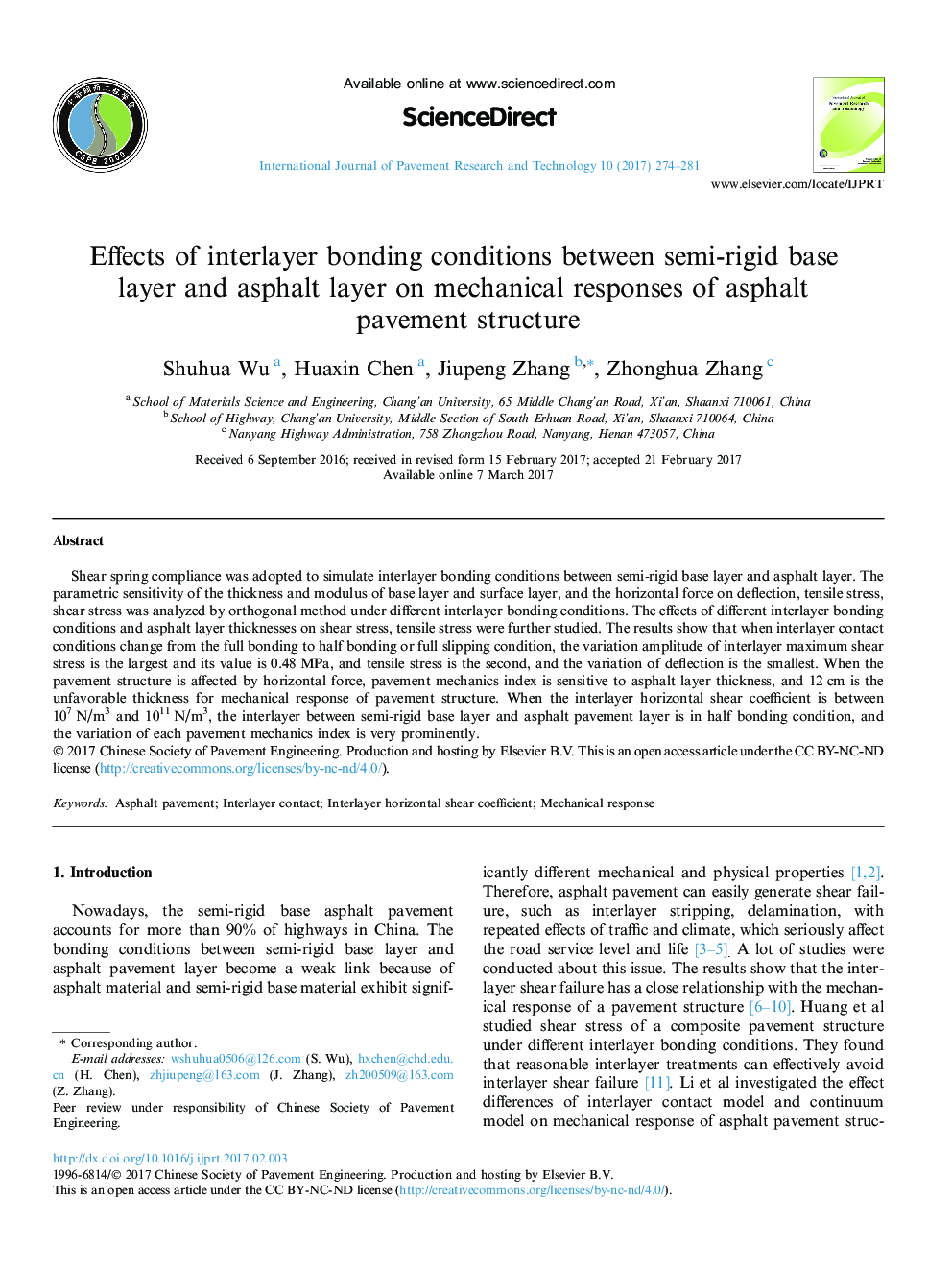| Article ID | Journal | Published Year | Pages | File Type |
|---|---|---|---|---|
| 4922050 | International Journal of Pavement Research and Technology | 2017 | 8 Pages |
Shear spring compliance was adopted to simulate interlayer bonding conditions between semi-rigid base layer and asphalt layer. The parametric sensitivity of the thickness and modulus of base layer and surface layer, and the horizontal force on deflection, tensile stress, shear stress was analyzed by orthogonal method under different interlayer bonding conditions. The effects of different interlayer bonding conditions and asphalt layer thicknesses on shear stress, tensile stress were further studied. The results show that when interlayer contact conditions change from the full bonding to half bonding or full slipping condition, the variation amplitude of interlayer maximum shear stress is the largest and its value is 0.48Â MPa, and tensile stress is the second, and the variation of deflection is the smallest. When the pavement structure is affected by horizontal force, pavement mechanics index is sensitive to asphalt layer thickness, and 12Â cm is the unfavorable thickness for mechanical response of pavement structure. When the interlayer horizontal shear coefficient is between 107Â N/m3 and 1011Â N/m3, the interlayer between semi-rigid base layer and asphalt pavement layer is in half bonding condition, and the variation of each pavement mechanics index is very prominently.
